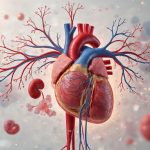Regular physical activity offers powerful benefits that can transform your daily life and long-term health. This guide is perfect for anyone looking to understand why moving your body matters – from busy professionals seeking more energy to people wanting to improve their mood, sleep better, or protect against chronic diseases.
You’ll discover how everyday movement helps with weight management and disease prevention, protects your heart and reduces your risk of conditions like diabetes and depression. We’ll also explore the mental health benefits, including how exercise naturally boosts your mood and reduces stress. Finally, you’ll learn about the surprising ways physical activity enhances your energy levels, improves sleep quality, and can even boost your intimate relationships and social connections.
The best part? You don’t need to become a gym enthusiast to see real results. Simple changes like taking the stairs, going for walks, or dancing can make a meaningful difference in how you feel and function every day.
Weight Management Through Physical Activity

Calorie-Burning Benefits of Exercise
Physical activity serves as a powerful tool for burning calories, with the intensity of your workout directly correlating to the number of calories you’ll burn. When you engage in any form of exercise, your body requires energy to fuel muscle contractions and maintain physiological functions, resulting in calorie expenditure that contributes to weight management goals.
More intense activities naturally burn significantly more calories than moderate exercises. High-intensity workouts like running, cycling at a vigorous pace, or participating in sports demand greater energy output, leading to higher calorie burn rates during and even after your workout session. However, it’s important to recognize that any amount of physical activity contributes to your daily calorie expenditure, making even light activities valuable for weight control purposes.
Preventing Weight Gain and Maintaining Weight Loss
Exercise plays a crucial role in both preventing excess weight gain and helping maintain weight that has already been lost. This dual benefit makes physical activity an essential component of long-term weight management strategies. Regular exercise helps create and maintain the caloric deficit necessary for weight control while preserving lean muscle mass.
For individuals focused on weight loss or maintaining their current weight loss achievements, research indicates that getting at least 300 minutes per week or more of moderate aerobic activity can be particularly effective. This substantial commitment to weekly exercise provides the consistent calorie burn needed to support sustainable weight management goals and prevent the gradual weight regain that often occurs without adequate physical activity.
Simple Daily Activities for Weight Control
Weight management doesn’t always require structured gym sessions or elaborate workout routines. Simple modifications to your daily activities can contribute significantly to your overall calorie expenditure and weight control efforts. Consistency in these small changes often proves more sustainable and effective than sporadic intensive exercise sessions.
Incorporating activities like taking the stairs instead of the elevator provides an excellent opportunity to increase daily movement without requiring additional time commitments. Similarly, revving up household chores by performing them with more energy and intensity can transform routine tasks into calorie-burning opportunities. The key principle to remember is that any amount of activity is better than none for weight control purposes, making these simple daily modifications both accessible and effective for maintaining a healthy weight over time.
Disease Prevention and Health Protection
Cardiovascular Health Improvements
Physical activity delivers remarkable benefits for your cardiovascular system by directly influencing key blood markers that determine heart health. Being active boosts high-density lipoprotein (HDL) cholesterol, commonly known as “good cholesterol,” which plays a crucial role in removing harmful cholesterol from your arteries and transporting it to your liver for disposal. Simultaneously, regular exercise decreases unhealthy triglycerides, which are fats that can accumulate in your bloodstream and contribute to arterial blockages.
This dual action of increasing good cholesterol while reducing harmful triglycerides creates a powerful protective effect for your cardiovascular system. The improved cholesterol profile enhances blood flow throughout your body, allowing oxygen and nutrients to reach vital organs more efficiently. These changes significantly lower your risk of developing cardiovascular diseases, including heart attacks, coronary artery disease, and other heart-related conditions that remain leading causes of mortality worldwide.
Chronic Disease Management and Prevention
Now that we have covered cardiovascular improvements, it’s important to understand how regular exercise serves as a comprehensive shield against numerous chronic health conditions. Physical activity helps prevent or manage many serious health problems that affect millions of people globally. Regular exercise is particularly effective in preventing and managing stroke, a life-threatening condition that occurs when blood flow to the brain is interrupted.
Metabolic syndrome, a cluster of conditions including increased blood pressure, high blood sugar, and abnormal cholesterol levels, can also be effectively managed through consistent physical activity. High blood pressure, which silently damages arteries and organs over time, responds remarkably well to regular exercise routines. Type 2 diabetes, a condition affecting how your body processes blood sugar, can be prevented or better controlled through physical activity that helps improve insulin sensitivity and glucose metabolism.
Additionally, arthritis sufferers often experience reduced joint pain and improved mobility through appropriate exercise programs, while regular physical activity helps prevent dangerous falls by improving balance, coordination, and bone strength.
Mental Health Benefits for Depression and Anxiety
Previously, we’ve explored physical health benefits, but exercise’s impact on mental wellness is equally profound. Regular physical activity helps prevent or manage depression and anxiety, two of the most common mental health challenges affecting people worldwide. Exercise triggers the release of endorphins and other mood-enhancing chemicals in the brain, creating natural antidepressant effects that can be as powerful as medication for some individuals.
The mental health benefits extend beyond mood regulation, as physical activity also helps improve cognitive function. This enhancement in brain performance includes better memory, sharper focus, increased mental clarity, and improved decision-making abilities, all of which contribute to better overall quality of life.
Cancer Risk Reduction
With this in mind, next we’ll examine one of exercise’s most significant protective benefits: cancer prevention. Regular physical activity helps reduce the risk of developing many types of cancer, providing a natural defense mechanism against these potentially life-threatening diseases. The protective effects occur through multiple pathways, including improved immune function, better hormone regulation, and enhanced cellular repair mechanisms.
Most remarkably, these combined health benefits contribute to lowering the risk of death from all causes, making regular physical activity one of the most powerful tools available for extending both lifespan and healthspan.
Enhanced Mental Well-being and Mood

Brain Chemical Stimulation for Happiness
Physical activity serves as a powerful catalyst for triggering the release of brain chemicals that directly influence our emotional state. When we engage in exercise, our bodies naturally stimulate the production of neurotransmitters and hormones that create profound feelings of happiness and well-being. This biochemical response occurs regardless of the intensity or duration of the physical activity, making even moderate exercise an effective tool for mood enhancement.
The neurochemical cascade initiated by physical movement creates a natural pathway to relaxation and emotional balance. These brain chemicals work synergistically to reduce feelings of anxiety and promote a sense of calm that extends well beyond the exercise session itself. This biological response represents one of the most immediate and accessible benefits of incorporating physical activity into daily routines.
Stress Reduction and Relaxation Benefits
Now that we’ve explored how exercise influences brain chemistry, it’s important to understand its practical application in stress management. Exercise functions as an exceptionally effective stress-relief mechanism, particularly valuable after experiencing challenging or demanding situations throughout the day. The physiological process of physical activity helps lower stress levels by providing an outlet for accumulated tension and nervous energy.
The stress-reducing effects of exercise create a buffer against daily pressures, allowing individuals to process and release the mental and emotional burden that accumulates during stressful periods. This natural stress management system becomes increasingly effective with consistent practice, as the body develops enhanced resilience to stress-inducing situations.
Improved Self-Esteem and Body Confidence
With this understanding of exercise’s stress-reduction capabilities, we can examine how regular physical activity contributes to enhanced self-perception and confidence. Regular exercise has a remarkable impact on how individuals view themselves, particularly regarding their physical appearance and overall self-worth. This improvement in self-esteem stems from both the physical changes that occur with consistent activity and the psychological satisfaction derived from maintaining an active lifestyle.
The confidence-boosting effects of exercise extend beyond mere physical appearance, encompassing a broader sense of personal achievement and capability. As individuals maintain regular exercise routines, they experience increased feelings of self-efficacy and personal empowerment, creating a positive feedback loop that reinforces continued physical activity and further enhances overall well-being.
Increased Energy and Physical Performance

Enhanced Muscle Strength and Endurance
Regular physical activity serves as a cornerstone for developing and maintaining muscle strength throughout the body. When you engage in consistent exercise routines, your muscle fibers adapt by becoming stronger and more resilient. This improvement in muscle strength extends far beyond aesthetic benefits, creating a foundation for enhanced functional capacity in daily life.
The endurance benefits of regular physical activity are equally remarkable. As you maintain consistent exercise habits, your muscles develop the ability to perform activities for extended periods without experiencing premature fatigue. This boost in endurance transforms how you approach physical challenges, allowing you to sustain energy levels throughout demanding tasks and activities.
Improved Cardiovascular Efficiency
Now that we have covered the muscular benefits, it’s essential to understand how exercise revolutionizes your cardiovascular system’s performance. Exercise acts as a delivery mechanism, sending vital oxygen and nutrients directly to your tissues with enhanced precision and speed. This process makes your cardiovascular system work more efficiently, creating a well-oiled machine that supports your entire body’s needs.
The improved efficiency of your heart and lungs creates a cascade of benefits that extend throughout your circulatory system. Your heart becomes stronger and more capable of pumping blood effectively, while your lungs develop greater capacity for oxygen exchange. This cardiovascular enhancement forms the foundation for sustained energy and improved physical performance.
Better Daily Task Management
With this cardiovascular and muscular foundation in mind, the practical applications become evident in everyday life. Improved heart and lung health provides substantially more energy to tackle routine daily chores that previously felt challenging or exhausting. Tasks such as grocery shopping, which once left you feeling drained, become manageable and less physically demanding.
Household tasks benefit tremendously from your enhanced physical capacity. Whether you’re carrying laundry upstairs, rearranging furniture, or engaging in yard work, your improved cardiovascular efficiency and muscle strength combine to make these activities feel less burdensome. The energy reserves you develop through regular physical activity create a buffer that allows you to approach daily responsibilities with renewed vigor and confidence.
Sleep Quality Improvements
Faster Sleep Onset
Physical activity serves as a natural sleep aid, significantly reducing the time it takes to fall asleep each night. When you engage in regular exercise, your body experiences beneficial physiological changes that prepare you for restful sleep. The physical exertion helps regulate your body’s natural sleep-wake cycle, making it easier to transition from wakefulness to sleep when bedtime arrives.
Regular physical activity creates the ideal conditions for faster sleep onset by naturally tiring your body and mind. This physical fatigue, combined with the stress-reducing effects of exercise, allows you to settle into sleep more quickly than sedentary individuals typically experience. The process becomes increasingly efficient as you maintain a consistent exercise routine, with your body learning to anticipate and prepare for sleep more effectively.
Deeper and More Restful Sleep
Beyond simply helping you fall asleep faster, regular physical activity fundamentally improves the quality of your sleep experience. Exercise promotes deeper, more restorative sleep phases that are essential for physical recovery and mental rejuvenation. During these enhanced sleep periods, your body can more effectively repair muscle tissue, consolidate memories, and restore energy levels.
The deeper sleep quality achieved through regular physical activity means you spend more time in the crucial slow-wave sleep stages. These phases are when your body performs its most important restorative functions, including hormone regulation, immune system strengthening, and cellular repair. As a result, you wake up feeling more refreshed and energized, ready to tackle the challenges of a new day with greater mental clarity and physical vitality.
Optimal Exercise Timing for Sleep Benefits
While physical activity offers tremendous sleep benefits, timing your exercise sessions appropriately is crucial for maximizing these advantages. The energizing effects of exercise can actually work against your sleep goals if you exercise too close to bedtime. Physical activity stimulates your nervous system, increases your heart rate, and raises your body temperature – all of which can make it difficult to wind down for sleep.
To harness the sleep-promoting benefits of exercise while avoiding its energizing effects, plan your workouts earlier in the day. This allows your body sufficient time to return to its baseline state before bedtime, ensuring that the natural fatigue from exercise enhances rather than interferes with your ability to fall asleep and maintain quality rest throughout the night.
Enhanced Sexual Health and Intimacy
Increased Energy Levels for Physical Intimacy
Regular physical activity serves as a powerful catalyst for boosting energy levels throughout the day, which directly translates to enhanced stamina and vitality for physical intimacy. When individuals engage in consistent exercise routines, their cardiovascular health improves significantly, leading to better blood circulation and oxygen delivery to all body systems. This enhanced physiological function means that people who exercise regularly experience less fatigue during intimate moments, allowing for more satisfying and prolonged physical connections with their partners.
The energy-boosting effects of physical activity stem from improved metabolic efficiency and enhanced endurance capacity. As the body becomes more conditioned through regular exercise, everyday activities require less effort, leaving more energy reserves available for intimate experiences. This increased energy translates to greater enthusiasm and participation in physical intimacy, creating a positive cycle where both partners can enjoy more fulfilling relationships.
Improved Physical Appearance Confidence
Physical activity plays a crucial role in enhancing self-perception and body confidence, which significantly impacts one’s comfort level during intimate moments. Regular exercise helps individuals feel more positive about their physical appearance, creating a psychological boost that enhances their overall sex life. When people feel good about how they look and feel in their own bodies, they’re more likely to engage openly and confidently in intimate situations.
This boost in confidence about physical appearance goes beyond mere aesthetics. Exercise creates a sense of physical accomplishment and body awareness that translates into greater comfort with one’s body during intimate moments. The improved muscle tone, better posture, and enhanced physical fitness that come with regular activity contribute to a more positive self-image, which directly influences sexual confidence and enjoyment.
Enhanced Arousal and Reduced Erectile Dysfunction
The physiological benefits of regular physical activity extend directly to sexual health and function. For women, consistent exercise has been shown to enhance arousal responses, improving the body’s natural ability to respond to intimate stimulation. This enhancement occurs through improved blood flow, increased sensitivity, and better overall physical conditioning that supports healthy sexual response cycles.
For men, the benefits are equally significant, with regular physical activity serving as a protective factor against erectile dysfunction. Men who maintain consistent exercise routines are statistically less likely to experience erectile dysfunction compared to their sedentary counterparts. This protection occurs through multiple mechanisms: improved cardiovascular health ensures better blood flow to all areas of the body, enhanced testosterone levels support healthy sexual function, and reduced stress levels contribute to better sexual performance. The combination of these factors creates a robust foundation for maintaining healthy sexual function throughout life.
Social Connection and Enjoyment Benefits

Fun Physical Activities and Outdoor Enjoyment
Exercise and physical activity can be fun, offering invaluable chances to unwind, enjoy the outdoors, or simply engage in activities that bring genuine happiness to your daily routine. Rather than viewing physical activity as a chore or obligation, embracing the enjoyable aspects transforms movement into a source of pleasure and relaxation. Outdoor activities provide particularly rich opportunities for enjoyment, allowing you to connect with nature while simultaneously improving your physical health.
The beauty of focusing on fun lies in its sustainability – when you genuinely enjoy what you’re doing, you’re far more likely to maintain consistent activity levels. Whether it’s dancing to your favorite music, exploring scenic hiking trails, or playing recreational sports, the element of enjoyment naturally reduces stress and creates positive associations with physical movement.
Family and Friend Bonding Opportunities
Physical activity provides exceptional opportunities to connect with family or friends in meaningful social settings. These shared experiences create lasting memories while simultaneously promoting everyone’s health and wellness. When you engage in activities together, you’re building stronger relationships through common goals and shared accomplishments.
Family bike rides, weekend hikes, or backyard games offer quality time that strengthens bonds while keeping everyone active. Similarly, exercising with friends transforms routine workouts into social events, making the time spent together both productive and enjoyable. These connections often extend beyond the activity itself, creating support systems that encourage continued participation and accountability.
Community Engagement Through Sports and Classes
Engaging in activities like dance classes, hiking groups, or joining a soccer team can foster significant community engagement and expand your social network. These organized activities provide structured opportunities to meet like-minded individuals who share similar interests in health and wellness.
Community sports leagues, fitness classes, and group activities create natural environments for building new friendships and strengthening community ties. Trying new activities or participating in them with others can effectively prevent boredom while introducing variety to your exercise routine. This social aspect of physical activity contributes to a sense of belonging and provides motivation through group dynamics and shared experiences.
Exercise Guidelines and Recommendations

Aerobic Activity Requirements and Options
Now that we’ve explored the comprehensive benefits of physical activity, it’s essential to understand the specific guidelines that maximize these health advantages. Healthy adults should aim for at least 150 minutes of moderate aerobic activity or 75 minutes of vigorous aerobic activity per week, or an equivalent combination of both intensities. This weekly requirement should be spread out over several days rather than concentrated into one or two sessions for optimal health benefits.
For individuals seeking enhanced health benefits or focusing on weight management, increasing the duration to 300 minutes or more of moderate aerobic activity per week is suggested. It’s important to recognize that even short periods of activity throughout the day can accumulate and offer significant health benefits, making physical activity accessible regardless of busy schedules.
Moderate aerobic exercises encompass activities that elevate your heart rate while still allowing conversation. These include brisk walking, biking at a leisurely pace, swimming recreationally, and even practical activities like mowing the lawn. Vigorous aerobic exercises require more intense effort and typically make conversation difficult. Examples include running, swimming laps competitively, engaging in heavy yardwork, and participating in aerobic dancing classes.
Strength Training Recommendations
Previously, we’ve focused on aerobic activity, but strength training forms an equally crucial component of a comprehensive exercise program. Adults should perform strength training exercises targeting all major muscle groups at least two times per week. This frequency ensures adequate muscle stimulation while allowing proper recovery time between sessions.
The intensity and volume requirements for strength training are straightforward yet effective. One set of each exercise is sufficient for achieving health and fitness benefits, provided you use a weight or resistance level heavy enough to tire your muscles after completing 12 to 15 repetitions. This rep range effectively promotes both muscular strength and endurance.
Strength training offers remarkable versatility in terms of equipment and methods. You can achieve these benefits using weight machines, free weights, or body weight exercises. Alternative options include heavy bags, resistance bands, resistance paddles in water, or engaging in activities like rock climbing that naturally provide resistance training benefits.
Professional Consultation for Safe Exercise Programs
With this foundation of exercise guidelines in mind, it’s crucial to recognize when professional guidance becomes necessary. Consulting a healthcare professional before starting a new exercise program is particularly important under specific circumstances that could affect your safety and exercise effectiveness.
Professional consultation is especially recommended if you have concerns about your current fitness level, have experienced a long period of physical inactivity, or manage chronic health problems such as heart disease, diabetes, or arthritis. These conditions require specialized exercise modifications and monitoring to ensure both safety and effectiveness in your fitness journey.
The evidence is clear: regular physical activity transforms every aspect of your health and well-being. From supporting weight management and preventing chronic diseases to enhancing mood, energy levels, and sleep quality, daily movement delivers comprehensive benefits that extend far beyond physical fitness. Whether it’s improved cardiovascular health, stronger mental resilience, or enhanced social connections, exercise truly serves as a cornerstone of a vibrant, fulfilling life.
Getting started doesn’t require a complete lifestyle overhaul. Following the recommended 150 minutes of moderate aerobic activity per week, combined with strength training twice weekly, provides a solid foundation for optimal health. Remember, any amount of activity is better than none—taking the stairs, walking briskly, or dancing with friends all count toward your daily movement goals. The key is consistency and finding activities you genuinely enjoy, making exercise a sustainable and rewarding part of your everyday routine.













